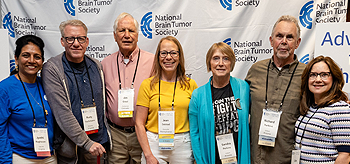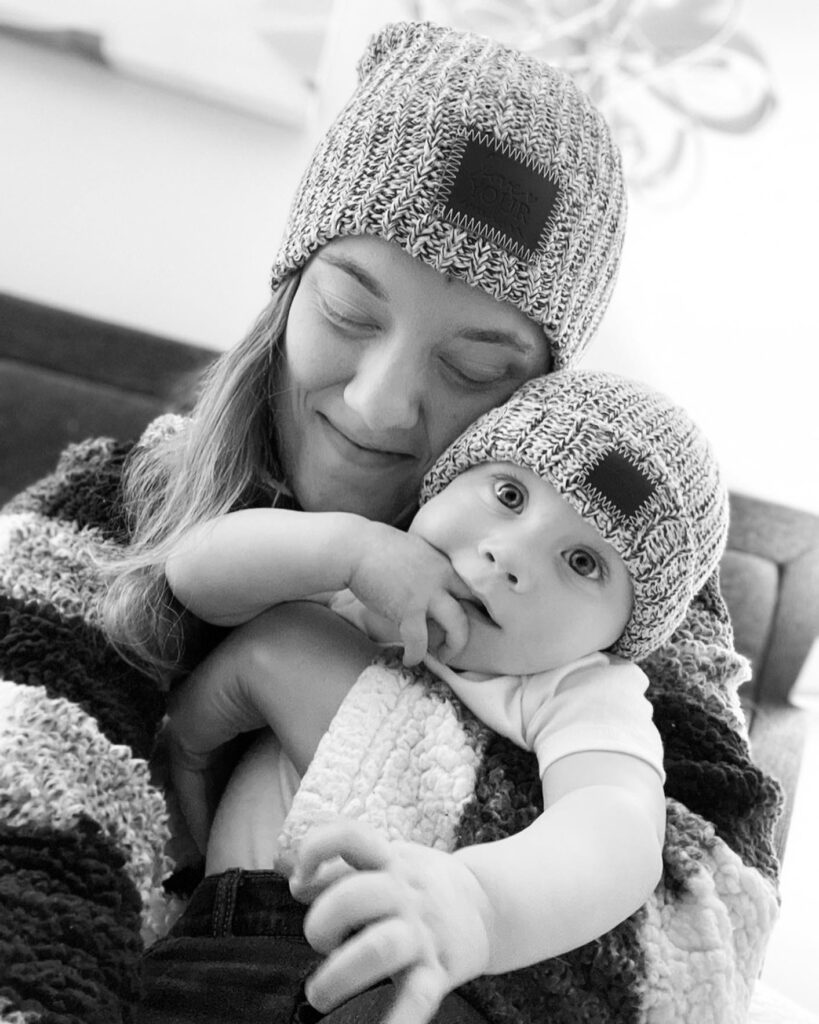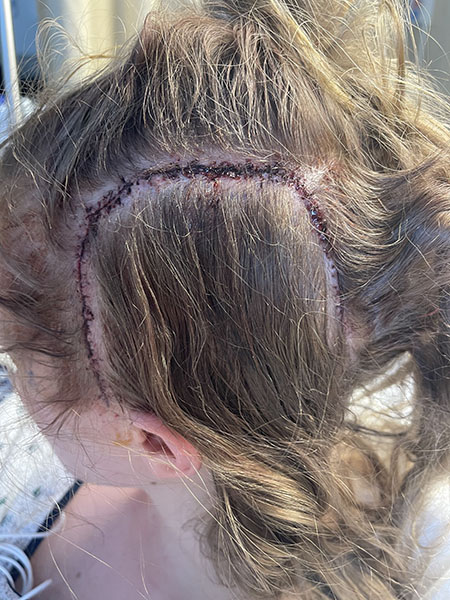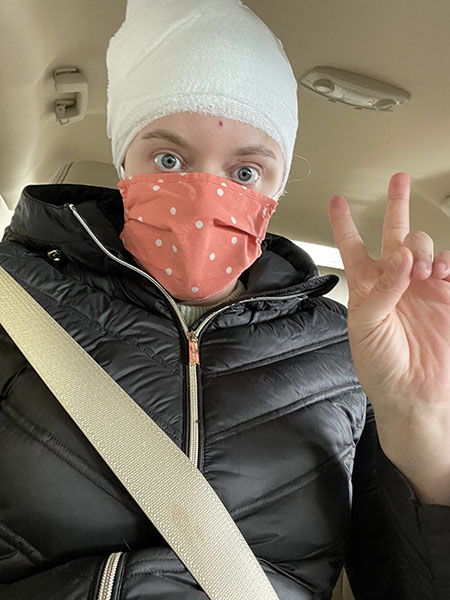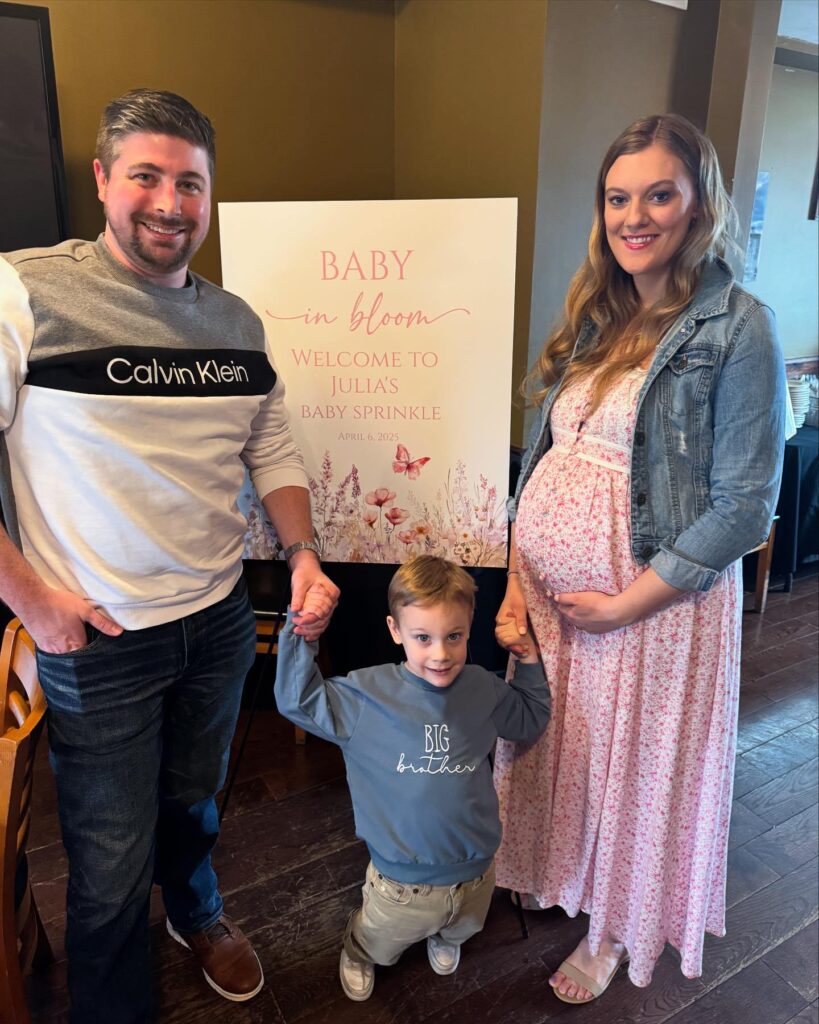At 26, Julia was a new mom and five months postpartum when her world stopped: she had a brain tumor. After surgery, her health care team believed it was aggressive cancer. But thanks to biomarker testing, Julia’s path — and her prognosis — changed entirely.
The Initial Diagnosis
In 2019, Julia started experiencing strange, unsettling symptoms — her right hand would suddenly go numb for a few minutes at a time. The episodes were sporadic and easy to dismiss, but over time, they became harder to ignore.
By the end of the year, Julia’s primary care physician referred her to neurology for an electromyography (EMG) and a nerve conduction study — both came back normal. Her doctor recommended an MRI to rule out anything more serious, but Julia’s insurance denied the request.
“I was a college student paying rent, so I wasn’t about to pay $1,500 out of pocket just because my hand was going numb,” Julia said. “So, we decided to wait and see.”
That wait stretched on for nearly two years. During that time, Julia carried and delivered her first child, all while her symptoms quietly escalated. What began as tingling in her hand progressed to numbness throughout her entire right arm and right leg. When the episodes became more frequent and severe, Julia’s doctor referred her to a multiple sclerosis center. There, she finally received the MRI she had been denied earlier.
It revealed a brain tumor.
“In retrospect, those episodes were focal seizures,” Julia said. “I had no idea that’s what they were — I just knew something wasn’t right.”
Because of how the tumor had presented, Julia and her care team assumed it was likely low grade. She underwent surgery, expecting reassurance. But the next morning, in the ICU, she felt anything but reassured.
“While I was still in the ICU, my neurosurgeon came in and told me it looked like an anaplastic astrocytoma,” Julia shared. “He said a reasonable prognosis was 10 years. I was horribly devastated — I remember crying so hard I couldn’t breathe. They had to give me medication to calm down. I was 26 years old with a 5-month-old baby at home. Heading into surgery, we assumed it was benign. To be told it was an aggressive cancer was just devastating.”
Biomarker Testing Provides Accurate Diagnosis
After surgery, Julia returned home and began preparing for a treatment plan that included both chemotherapy and radiation. But just as her care team at a local cancer center in Buffalo, New York, was finalizing her next steps, the pathology results raised questions.
“The initial pathology report didn’t fully line up with what they expected from an aggressive tumor,” Julia said. “They thought it was something called pleomorphic xanthoastrocytoma, or PXA. It’s a rare type of brain tumor that looks aggressive under a microscope, but it’s actually a low-grade tumor.”
That uncertainty prompted a critical decision: to hold off on starting treatment and send Julia’s tumor tissue to Mayo Clinic for comprehensive biomarker testing.
“It was nerve-wracking to wait for those results,” Julia recalled. “But I was still in the thick of recovery — trying to heal, trying to be a mom — so most of my energy went there.”
Six to eight weeks later, the results came in. Biomarker testing revealed Julia’s tumor carried a wild-type p53 mutation, but none of the genetic hallmarks typically found in more aggressive brain cancers. The tumor was diagnosed as a WHO grade 1-2 glial tumor with mixed features of a pleomorphic xanthoastrocytoma, pilocytic astrocytoma, and ganglioglioma.
“The biomarker testing gave us clarity that pathology alone couldn’t,” Julia said. “The testing also allowed my health care team to give me a more accurate prognosis for the future, by understanding the genetic features of the tumor itself, and how they typically behave with those characteristics.”
Biomarker Testing Changed Medical and Personal Decisions
Because Julia’s tumor had been completely removed during surgery, and biomarker testing confirmed it had low-grade genetic characteristics, her care team took a dramatically different approach: they decided to monitor her health with regular MRIs instead of immediately moving forward with radiation or chemotherapy.
“Genetically, the tumor resembled something much less aggressive than what they originally thought,” Julia said. “So we were able to take a wait-and-see approach, which is what we’ve continued ever since — more than two and a half years later.”
That shift in her treatment plan brought more than just relief — it gave Julia and her family the space to consider what the future could look like beyond her diagnosis.
“Knowing the genetic features of the tumor, my team estimated my recurrence rate was in the neighborhood of 5-10%,” Julia said. “It has influenced our decisions because I feel a lot more secure knowing that it has the features of a lower-grade tumor that are less likely to transform into something higher grade, and it has a low likelihood of coming back.”
Julia and her husband had put the possibility of having another child on hold. But with the knowledge that her tumor was less likely to return or transform into something more dangerous, they felt confident moving forward.
“I wouldn’t have risked another pregnancy if I thought that the tumor was something that was going to potentially come back and be aggressive,” Julia explained. “Biomarker testing gave us the information we needed to make deeply personal, informed decisions — not just about my health, but about our family.”
That clarity — and that kind of decision-making power — is what the National Brain Tumor Society’s MyTumorIDTM campaign is all about. By encouraging biomarker testing for all patients with a brain tumor, the initiative helps ensure that more people like Julia can access tailored diagnoses and treatment options based on the unique molecular profile of their tumor.
Benign is Not Fine
While Julia was able to breathe a sigh of relief knowing her tumor was less aggressive, the reality of living with a brain tumor, benign or not, is far more complex. “Benign” may have brought some sense of security, but for Julia, it was a stark reminder that a tumor, regardless of its grade, still doesn’t belong in your brain.
“People hear ‘benign’ and think it’s harmless, but I don’t think we should view brain tumors in that way,” Julia shared. “Just because it’s not cancerous doesn’t mean it won’t cause significant problems or impact your life. Something that shouldn’t be growing in your brain can still have a major effect.”
Julia’s focal seizures continued after surgery, and she was diagnosed with epilepsy about a year after her craniotomy. These quality of life challenges continue to shape Julia’s everyday experience. Even the side effects from the medication she now takes for her seizures have added another layer of difficulty.
“I’m still dealing with the side effects of anti-convulsants, which mess with my mood, appetite, and sleep,” Julia said.
For Julia, the aftermath of her brain tumor diagnosis has also included mental health challenges.
“I was diagnosed with PTSD six to eight months after surgery,” Julia explained. “I have a ton of medical anxiety that I still deal with. Even being almost three years out, going to doctors’ offices still triggers that feeling. There’s so much anxiety involved with constant appointments and MRIs. Despite the fact that it was benign, it still affects my life, literally every single day.”
What the Future Holds
About one year after Julia’s surgery, she returned to work as a pediatric occupational therapist (OT).
“Surviving a brain tumor has changed the way I connect with my patients,” Julia shared. “Now that I’ve been on the other side of occupational therapy, I understand their struggles in a much deeper way. “I work with medically complex children, many of whom take seizure medications just like I do. This personal experience has made me more empathetic, and I’m able to connect with both the children and their families on a much more personal level.”
Today, Julia is pregnant with her second child, due in early June 2025, while balancing the demands of her career and pursuing a doctorate in occupational therapy.
“Knowing what I know about my tumor — because of biomarker testing — gave me the confidence to move forward with my life,” Julia said.


